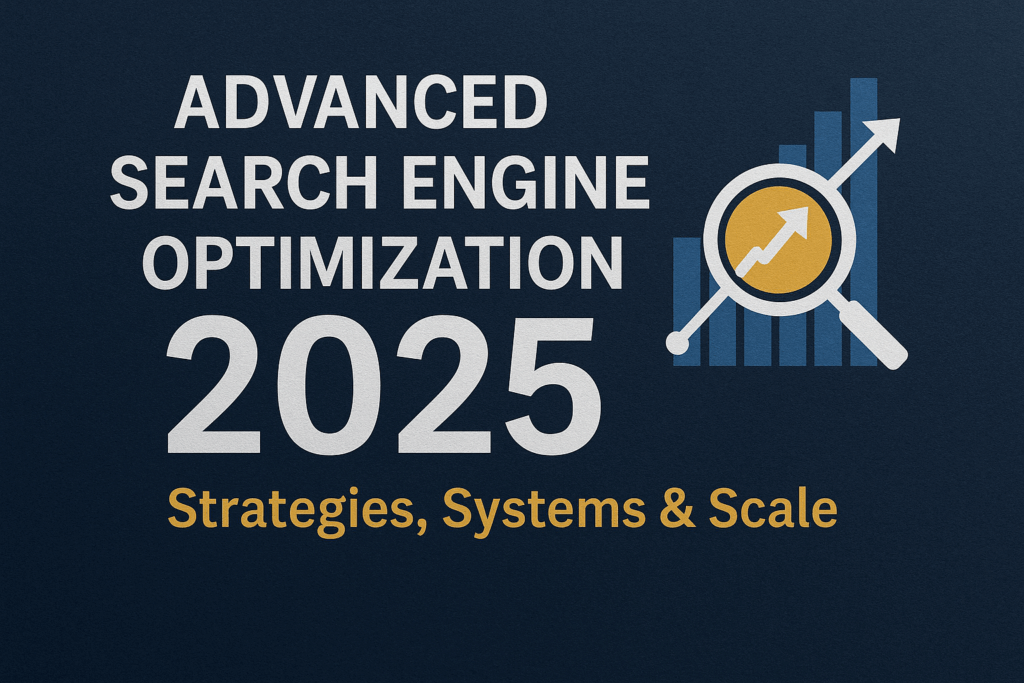Is Investing in SEO Services a Good Idea? A Comprehensive Guide
In today’s digital-first landscape, businesses are increasingly recognizing the importance of visibility on search engines like Google and Bing. Search Engine Optimization (SEO) has emerged as a cornerstone of digital marketing, helping brands attract organic traffic, increase credibility, and drive sustainable growth. But the question remains: is investing in SEO services really a good idea? This comprehensive guide, spanning over 2500 words, will dive deep into the rationale, benefits, potential downsides, and strategic considerations surrounding SEO investments.
Understanding SEO: More Than Just Rankings
At its core, SEO is the practice of optimizing your website and its content to improve your visibility in organic (non-paid) search engine results. The primary goal of SEO is to drive more relevant traffic to your website, increase conversions, and ultimately grow your business.
SEO encompasses various practices, including keyword research, content creation, technical optimization, link building, and performance tracking. When implemented correctly, SEO offers long-term, compounding benefits that often outweigh other digital marketing channels in terms of cost and sustainability.
Why SEO Is a Strategic Investment for Businesses
1. Enhanced Visibility and Organic Traffic
One of the most compelling reasons to invest in SEO is the visibility it offers. Over 90% of online experiences begin with a search engine, and studies show that the majority of users click on results from the first page. Ranking in these coveted positions means more eyes on your website, and more potential leads and sales.
Effective SEO ensures your content is aligned with user intent, helping your business appear for relevant queries. Whether you’re a local restaurant, an e-commerce platform, or a B2B services provider, SEO can help customers find you when they need you most.
2. Cost-Effective Customer Acquisition
Unlike paid advertising, where you pay for every click or impression, SEO attracts organic traffic. While there are costs involved in creating content and optimizing your site, the long-term return on investment (ROI) is often higher. Once your content ranks, it can continue to bring traffic with little to no additional cost.
This makes SEO a more sustainable and scalable marketing tactic. Businesses that rely on paid traffic alone are at risk if their ad budgets are cut or if ad costs rise. SEO provides a buffer by delivering consistent, cost-effective traffic.
3. Long-Term Results and Compounding Returns
SEO is a long-term game. Unlike paid ads that stop the moment you stop paying, high-performing SEO strategies deliver ongoing benefits. A blog post that ranks well today can bring traffic for months or even years, especially if it’s updated regularly.
As your website gains authority and trust from search engines, new content is likely to rank faster and perform better, creating a compounding effect. Over time, your SEO efforts build momentum, resulting in exponential growth.
4. Improved Brand Credibility and Trust
Consumers trust search engines to deliver the most relevant and trustworthy results. Ranking highly for your target keywords signals to users that you’re a credible source. In fact, users often equate high search rankings with industry leadership.
In addition to content quality, search engines consider site speed, mobile-friendliness, and secure connections (HTTPS) when ranking pages. By optimizing these elements, you also enhance your brand’s professionalism and reliability.
5. Enhanced User Experience (UX)
Good SEO practices go hand-in-hand with user experience. Google’s algorithm increasingly prioritizes websites that are easy to navigate, quick to load, and responsive across all devices.
Improving UX reduces bounce rates, increases time spent on site, and boosts conversion rates. SEO-focused audits often uncover technical issues like broken links, duplicate content, or poor site architecture—factors that negatively impact both SEO and user satisfaction.
6. Competitive Advantage in Your Industry
If your competitors are investing in SEO and you’re not, you risk losing market share. However, by prioritizing SEO and producing better, more optimized content, you can surpass competitors—even those with larger budgets.
Staying on top of SEO trends, such as Core Web Vitals, voice search optimization, and schema markup, can give you an edge. SEO is a dynamic field, and staying updated helps you capitalize on new opportunities faster than your competition.
7. Data-Driven Marketing Decisions
SEO provides a wealth of data that helps refine your broader marketing strategy. Using tools like Google Analytics, Google Search Console, Ahrefs, or SEMrush, you can gain insights into how users find and interact with your site.
Key performance indicators (KPIs) such as organic traffic, bounce rate, conversion rate, and keyword rankings allow you to make informed decisions and continually improve your efforts.
When SEO Might Not Be Ideal
While SEO offers immense value, it’s not the best fit for every scenario. Here are some cases where investing in SEO might not deliver immediate or substantial results:
1. Very Low Search Volume for Your Product/Service
If you operate in a niche where people don’t actively search for your offerings, SEO may yield limited returns. For instance, an entirely new product category or localized services in areas with minimal search volume might benefit more from direct outreach or social media marketing.
Before investing heavily in SEO, use tools like Google Trends and Keyword Planner to assess whether there’s enough demand for your services.
2. Highly Saturated and Competitive Markets
Certain industries—like legal services, real estate, and finance—are extremely competitive in the SEO space. Ranking for high-value keywords in these niches can take significant time, money, and effort.
If you need immediate results, paid advertising may be a better initial approach. That said, SEO should still be part of your long-term strategy. Even in tough markets, focusing on long-tail keywords and content differentiation can yield results.
3. Limited Technical Capabilities
SEO requires a solid website infrastructure. If your site is poorly built or not optimized for mobile, speed, or security, it may struggle to rank.
Before investing in SEO services, ensure your website is technically sound. A comprehensive site audit can reveal critical issues that need fixing. Sometimes, investing in a website redesign is a necessary precursor to SEO success.
4. Short-Term Marketing Objectives
If your business needs quick visibility, such as for a flash sale or product launch, SEO alone may not suffice. SEO takes time to build momentum. For short-term goals, consider combining SEO with other channels like PPC, influencer marketing, or social ads.
Evaluating Whether SEO is Right for You
Here’s a step-by-step approach to determine if SEO aligns with your business goals:
Step 1: Define Clear Objectives
Ask yourself:
- Do I want to increase brand visibility?
- Am I looking to reduce dependence on paid ads?
- Is long-term traffic growth important to my business?
If the answer is yes to any of these, SEO is likely a smart investment.
Step 2: Conduct a Market and Competitor Analysis
Understand how your competitors are leveraging SEO. Are they ranking for valuable keywords? What kind of content are they publishing? Tools like Ahrefs and SEMrush can help analyze competitor strategies.
Step 3: Audit Your Website
An SEO audit can help identify issues with site structure, speed, content, and more. Fixing these foundational problems is crucial for successful optimization.
Step 4: Plan Your Budget and Resources
SEO isn’t free. Consider costs for hiring an agency, content creation, link building, and ongoing optimization. Decide whether you’ll build an in-house team or outsource to experts.
Step 5: Create a Long-Term Strategy
SEO requires consistency. Set realistic timelines—typically 4 to 6 months to see significant movement—and build a roadmap. Define KPIs like traffic growth, keyword rankings, and conversion improvements.
In-House SEO vs. Hiring an Agency
Choosing between building an internal SEO team or hiring an agency depends on your budget, timeline, and internal capabilities.
Benefits of In-House SEO:
- Greater control and integration with other marketing efforts
- Dedicated focus on your brand
- Easier communication
Benefits of Hiring an SEO Agency:
- Access to a broader range of expertise and tools
- Faster implementation
- Proven strategies across multiple industries
Many businesses start with an agency and later transition to in-house SEO as their knowledge and resources grow.
Best Practices for a High-Impact SEO Strategy
- reflect user intent.
- Prioritize Content Quality: Invest in comprehensive, useful, and original content that solves user problems.
- On-Page Optimization: Ensure every page has optimized meta tags, headers, images, and internal linking.
- Technical SEO: Use clean URLs, responsive design, secure protocols (HTTPS), and fast-loading pages.
- Link Building: Earn high-quality backlinks through guest posting, outreach, and content partnerships.
- Track and Refine: Continuously monitor performance metrics and make adjustments as needed.
Common Mistakes to Avoid
- Focusing solely on traffic instead of conversions
- Keyword stuffing and over-optimization
- Ignoring mobile optimization
- Failing to update old content
- Not tracking ROI
Evaluating If You’re SEO-Ready
Before diving into SEO, it’s crucial to assess whether your business is truly ready to benefit from it. Use this checklist to evaluate feasibility:
- Do you have an SEO-friendly CMS? Platforms like WordPress, Webflow, or Shopify offer the flexibility needed for effective SEO.
- Is your site technically sound? Ensure your site is mobile-responsive, loads quickly, and can be indexed correctly by search engines.
- Can you create content regularly? SEO thrives on fresh, high-quality content. Do you have the internal team or budget to produce this consistently?
- Are analytics set up? Use Google Analytics 4 (GA4) and Google Search Console (GSC) to track performance and user behavior.
- Are you tracking the right KPIs? Focus on conversions and user engagement rather than just rankings.
- Is leadership on board? SEO requires a long-term commitment—are decision-makers aligned for a 6–12 month investment horizon?
If you can answer “yes” to these questions, your foundation for SEO is strong.
SEO vs. Other Digital Marketing Channels
When evaluating SEO against other digital marketing channels, it’s essential to understand their strengths and trade-offs:
- SEO vs. PPC: While PPC offers immediate visibility, it operates on a cost-per-click basis, requiring ongoing investment. In contrast, SEO delivers compounding traffic over time, with no ongoing cost for clicks once rankings are achieved.
- SEO vs. Social Media: Social media excels at engagement, building brand loyalty, and direct interaction. SEO, however, is a demand-capture tool that helps users find your business when they’re actively searching for solutions.
- SEO vs. Influencer Marketing: Influencer marketing creates awareness and generates demand, but SEO focuses on demand capture, helping you convert that demand into actionable traffic.
A hybrid strategy can combine the strengths of both worlds: run PPC ads while your SEO efforts build long-term organic visibility. SEO also supports social and influencer marketing by optimizing keyword-driven landing pages and blog SEO, which can be used for retargeting ads.
Case: Brands That Did and Didn’t Benefit From SEO
Case 1: SaaS Company
A SaaS company invested in SEO for one year, focusing on long-tail keywords and high-quality content. As a result, their organic traffic grew 5x, leading to a significant increase in qualified leads and lower customer acquisition costs. This success was driven by alignment between SEO efforts and their business goal of expanding brand awareness in a competitive market.
Case 2: E-commerce Brand
An e-commerce brand spent heavily on SEO without optimizing for conversion rate optimization (CRO). Despite seeing a traffic boost, their sales didn’t increase proportionally. The issue? Their SEO strategy lacked a seamless customer journey, and the site’s conversion elements were neglected, making the traffic difficult to convert traffic.
Key Takeaway: SEO success is not just about rankings. It requires strategic execution and alignment with business goals to achieve tangible results. Without a holistic approach, even the best SEO can fall short.
Should YOU Invest in SEO?
Yes, if:
- You’re focused on long-term growth and brand building.
- Your target audience actively searches for your product or service.
- You have the resources to create and optimize content regularly.
No, if:
- You expect immediate results or need a quick ROI.
- You cannot produce content or manage technical SEO.
- Your business model relies primarily on outbound marketing or direct sales.
Take Action: Use the SEO readiness checklist above to assess your fit for a successful SEO investment.
Frequently Asked Questions
How long does SEO take to show results?
SEO typically takes 3 to 9 months to produce significant results, depending on competition and your website’s authority.
What’s a healthy SEO budget?
A healthy budget ranges from $1,500 to $5,000/month for mid-tier services, though it can be higher for larger brands.
Can SEO be done in-house effectively?
Yes, especially for content-heavy brands, but it requires a skilled team and ongoing resources.
Is SEO dead in 2025 with AI search?
No, SEO continues to evolve but remains essential for organic visibility.
Can AI tools replace SEO experts?
AI tools can assist, but SEO experts are crucial for strategy, nuance, and adapting to changes.
Final Thoughts: Is SEO Worth It?
In most cases, yes—investing in SEO is a highly worthwhile endeavor. It enhances your online presence, builds brand trust, generates organic traffic, and positions your business for long-term success.
However, like any strategic investment, SEO requires commitment. It’s not a quick fix but a sustained effort that pays dividends over time. Businesses willing to invest the time and resources into a well-planned SEO strategy often see it become their highest-performing marketing channel.
If your business model relies on digital visibility, if you’re looking for scalable growth, and if you’re aiming to reduce customer acquisition costs, SEO is not just a good idea—it’s an essential part of your marketing arsenal.
Start small, scale smartly, and keep learning. The digital landscape evolves constantly, and staying ahead means staying optimized.







